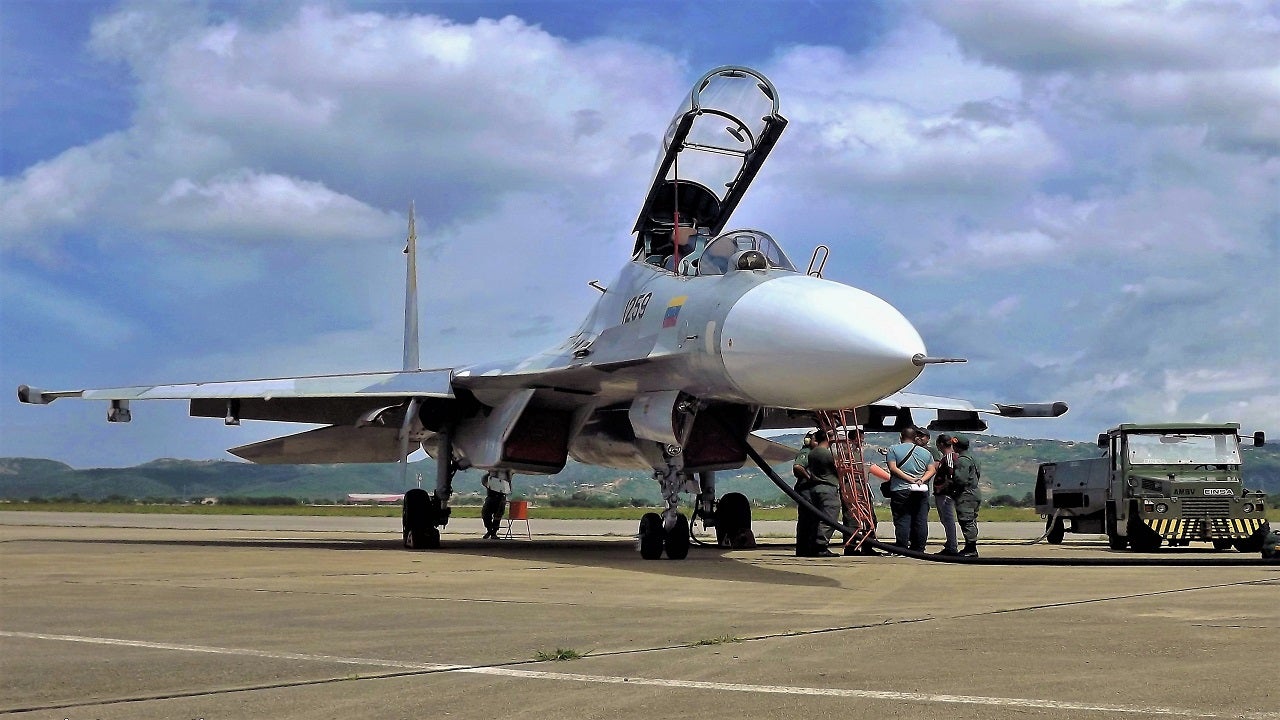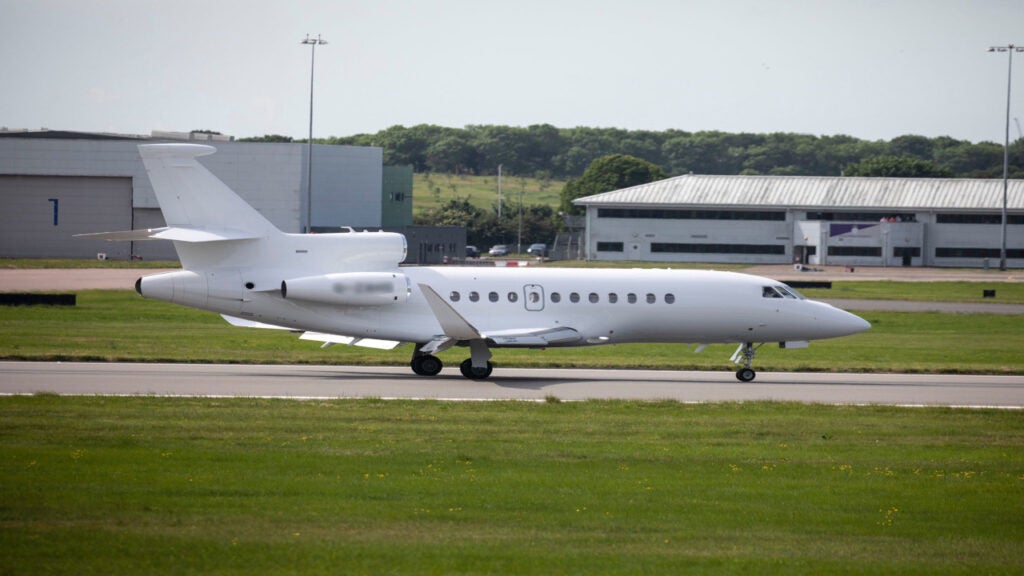
The Sukhoi Su-30M is a multirole two-seater fighter, broadly comparable to the American F-15E. The Su-30MK is the export version of the aircraft. The fighter is a development of the Su-27 (Flanker) family, designed by the Sukhoi Design Bureau of Moscow, and is manufactured by the Irkut Corporation.
The aircraft is equipped with similar avionics and thrust vectoring as the Su-37, for superior combat agility and manoeuvrability. The aircraft is armed with precision anti-surface missiles and has a stand-off launch range of 120km.
Cockpit of the multirole Su-30 M fighter aircraft
The pilots are seated in tandem. The Su-30MKI for the Indian Air Force is fitted with an avionics suite developed by the Ramenskoye Design Bureau (RPKB).
The displays include a Thales (formerly Sextant Avionique) VEH3000 head up display and seven liquid crystal multifunction displays, six 127mm×127mm and one 152mm×152mm. The Su-30MKI has a high-accuracy Sagem Totem integrated global positioning system and ring laser gyroscope inertial navigation system.
The rear cockpit is fitted with a larger monochromatic screen display for the air-to-surface missile guidance.
The Su-30M can be equipped with a Phazotron N010 Zhuk-27 radar or a NIIP N011M BARS pulse Doppler phased array radar. The Su-30MKI is fitted with the N011M, which can track up to 15 targets simultaneously. The sensors include a rear-facing radar installed in the tailcone.
Weapons and air-to-air missiles on board Su-30 M aircraft The aircraft is fitted with a 30mm GSh-301 gun with 150 rounds of ammunition. The aircraft has 12 hardpoints for external payloads of up to 8,000kg and can carry one or two mission pods, such as a laser designator or an anti-radiation missile guidance system. The Malaysian Su-30MKM is fitted with the Thales Damocles laser designator pod.
The Su-30M, like the Su-30, can engage two airborne targets simultaneously. The aircraft can be armed with up to six medium-range air-to-air missiles, such as the R-27RE (Nato codename AA-10C Alamo-C), the R27TE (AA-10D Alamo-D) or the Vympel RVV-AE (AA-12 Adder).
An alternative air-to-air missile fit is two AA-10D Alamo medium-range and six close-range Vympel R-73E (Nato AA-11 Archer) infrared homing missiles.
Air-to-surface missiles
The aircraft has a TV command guidance system. The air-to-surface missile fits include four anti-radiation missiles, six laser-guided short-range missiles or six short-range anti-surface missiles with television-controlled homing.
The aircraft has a stand-off launch range of up to 120km. For long-range anti-surface capability, the aircraft is armed with two TV command guided missiles, such as the Kh-29 (AS-14 Kedge) with a 317kg penetrating warhead, the Zvezda Kh-31A (AS-17 Krypton) or the Raduga Kh-59M (AS-18 Kazoo).
For anti-surface ship missions, the aircraft is armed with a one Raduga 3M80E Moskit supersonic anti-ship missile. In October 2020, the Brahmos missile was successfully test fired using a Su-30 MKI aircraft.
The test was conducted around Bay of Bengal where the missile accurately hit a sinking ship by air strike from Su-30 MKI.
Sukhoi Su-30M munitions and countermeasures
Other possible anti-surface weapon fits include bombs, rockets and rocket pods. The aircraft can carry AB-500, KAB-500KR and KAB-1500KR bombs, 80mm and 130mm rocket packs and S-25 250mm rockets.
The aircraft’s integrated electronic warfare system includes a Tarang radar warning system, indigenously produced by the Indian Defence R&D Organisation (DRDO), and systems supplied by Israeli manufacturers.
The Malaysian Su-30MKM is fitted with a missile approach warning system and laser warner by Saab Avitronics in South Africa.
The Su-30MK is powered by two Saturn AL-37FP thrust vectoring engines, as installed on the Su-37 aircraft. The aircraft’s flight control system computes and manages the adjustment of the thrust and the vectoring for each engine. The nozzles are directed through ±15° in pitch. In an emergency, such as a system failure, the nozzles are returned hydraulically to a level flight position.
The aircraft normally carries 5,090kg of fuel in three integral fuel tanks in the fuselage and a single integral split tank, with each half installed in the outer wings. The maximum fuel capacity of the aircraft is 9,400kg.
The aircraft is equipped with a flight refuelling probe and a buddy-buddy refuelling system. The combat range of the aircraft on internal fuel is 3,000km. With a single in-flight refuelling procedure, the combat range is extended to 5,200km.
Su-30 MKI manoeuvrability and braking systems
The aircraft has hydraulically retractable tricycle-type landing gear supplied by Hydromash. The main landing gear, fitted with KT-156D single wheels, turns through 90° to retract forward into the bay in the wingroot. The main landing gear is fitted with hydraulically operated carbon disc brakes with an electric brake cooling fan and an anti-skid system.
The single KND-27 nosewheel is hydraulically steerable and is forward retracting. A brake parachute compartment is installed in the tailcone at the rear of the fuselage.
Su-30 MK international orders
The Indian Air Force ordered 40 aircraft in 1996 and an additional ten aircraft in 1998. A total of 18 Su-30K have been delivered, which were later upgraded to MKI standards. First deliveries of ten Su-30MKI full specification aircraft with thrust vectoring and phased array radar took place in September 2002 and deliveries were completed in December 2004.
Hindustani Aeronautics (HAL) was also contracted to build 140 Su-30 MKI aircraft in India between 2003 and 2017, as part of a licensed production agreement. The first indigenously assembled aircraft was delivered in November 2004. About 119 aircraft were delivered by the end of 2012.
In December 2012, HAL signed a contract with the Indian Ministry of Defence and Russian arms export agency Rosoboronexport for the production and delivery of 42 Su-30MKI aircraft to the Indian Air Force (IAF). In January 2021, the HAL manufactured the final two units of Su-30 MKI platform and fulfilled its contract requirement to manufacture 272 aircraft for the IAF.
In 2003, Malaysia ordered 18 Su-30MKM aircraft. The first two were delivered in May 2007. Four more were delivered in 2007 and four in March 2008. Deliveries were concluded in August 2009. Indonesia also ordered two Su-30MKK aircraft in 2003.
A further three Su-30MK2 aircraft were ordered in August 2007, the orders for this contract were received between 2008 and 2010. Indonesia placed an order for six more Su-30MK2 aircraft in January 2012, which were delivered between February 2013 and September 2013A total of 38 Su-30MKK and 24 navalised Su-30MK2 aircraft, which do not have thrust vectoring capability, are in service with the Chinese Air Force.
In March 2006, Algeria placed an order for 28 Su-30MKA aircraft. The first fighter was delivered in December 2007 and final aircraft was handed over in September 2009. In July 2006, Venezuela placed a contract for 24 Su-30MKI aircraft. The first eight were delivered in May 2007 and deliveries were concluded in August 2008.



